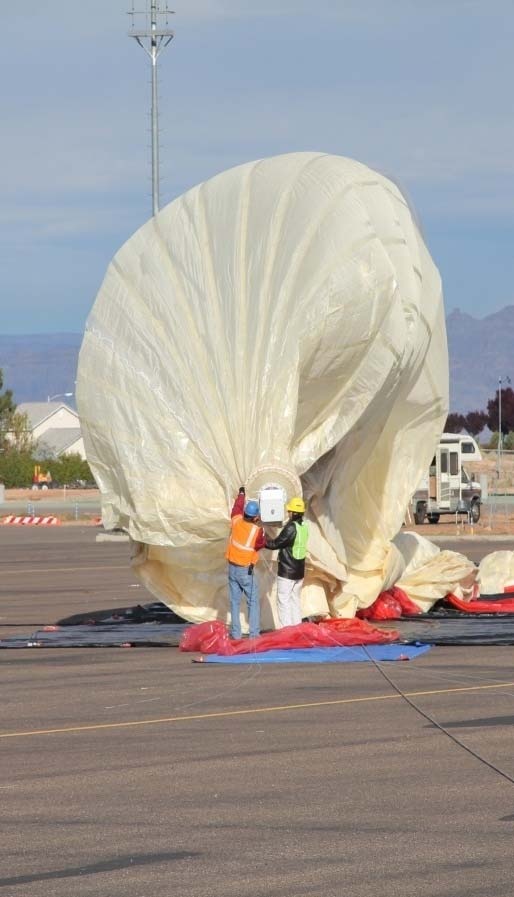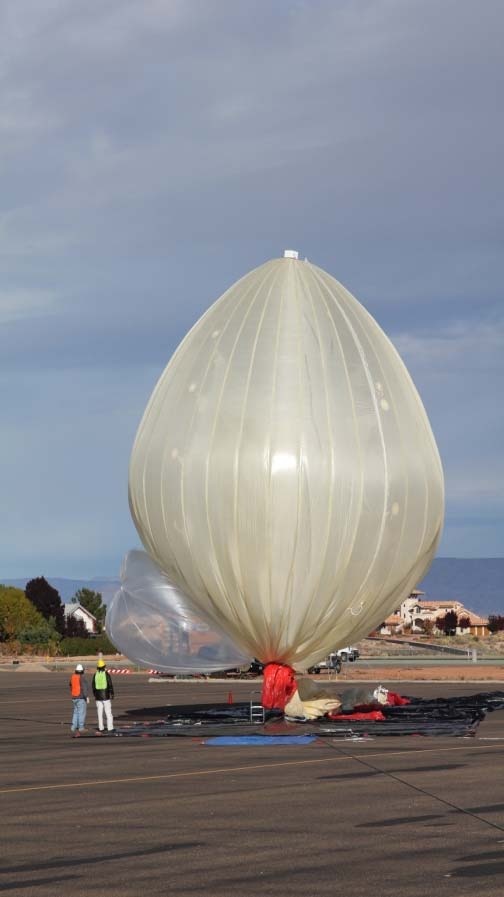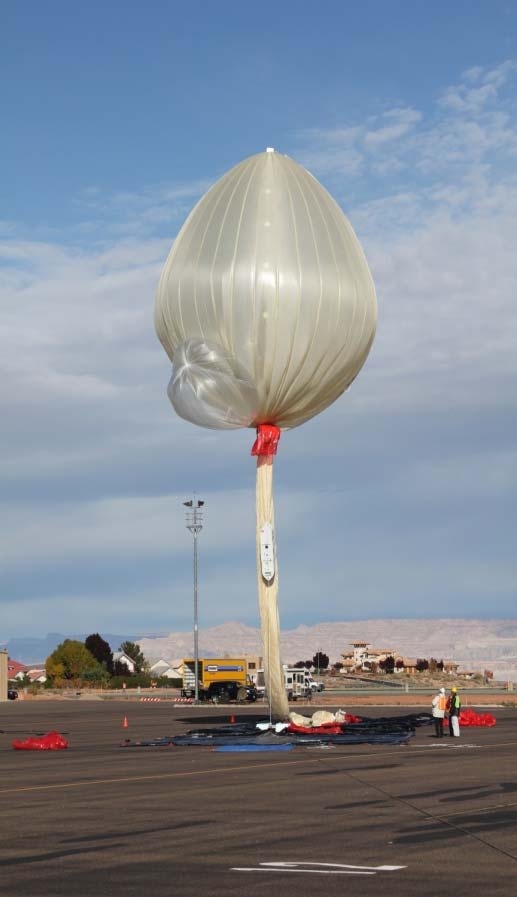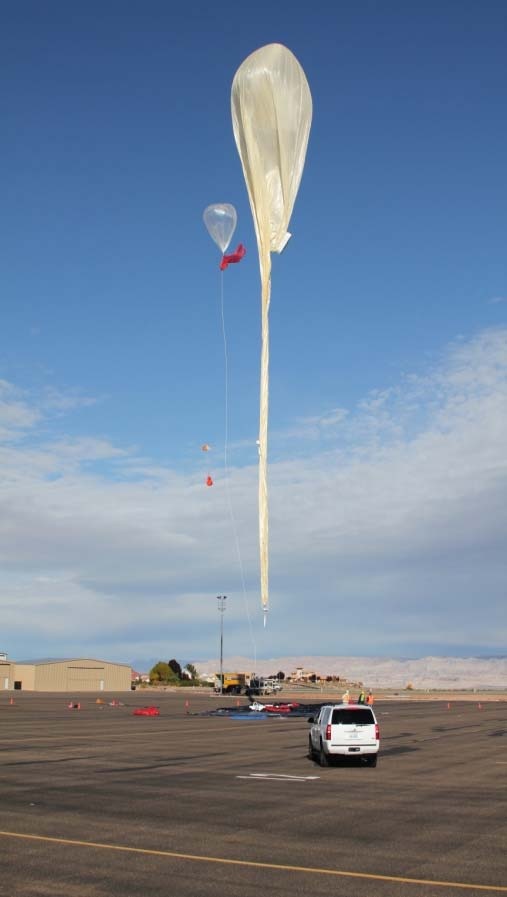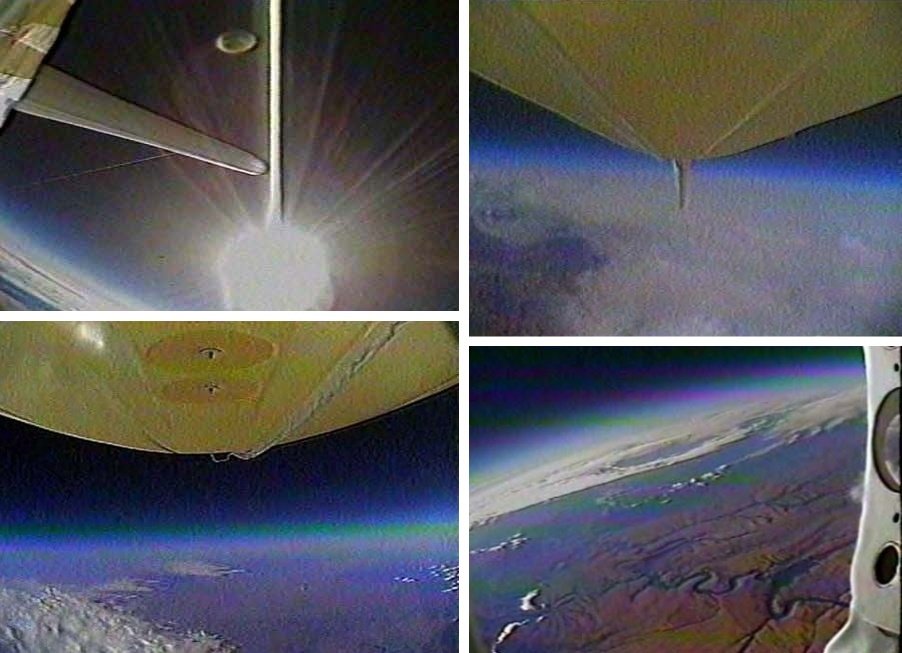Purpose of the flight and payload description
HiSentinel is the first airship developed under the Composite Hull High Altitude Powered Platform (CHHAPP) program, a spiral development program for a family of long-endurance autonomous solar-electric, stratospheric airships. Alike other vehicles of the same kind, the HiSentinel is launched like a conventional zero pressure stratospheric balloon and acquire his typical shape once at float altitude. The final goal of the program is to develop a vehicle that no need special facilities like hangars or shelters to be deployed in the operations theater. Once operative it would be capable of lifting small to medium payloads (20 to 200 pounds) to near-space altitudes during entire weeks for communications, military and science applications. The entire project is under managment of the US Army Space and Missile Defense Command with the Southwest Research Institute as prime contractor for technical management, airframe design, performance modeling, support systems, and launch and recovery along with Raven's subsidiary Aerostar International as sub-contractor and COLSA as payload developer and integrator.
Video footage of the launch
Details of the balloon flight
Balloon launched on: 11/10/2010
Launch site: Page Airport, Arizona, US
Balloon launched by: US ARMY
Balloon manufacturer/size/composition: Zero Pressure Balloon Airship - 212.754 cuft
End of flight (L for landing time, W for last contact, otherwise termination time): 11/11/2010
Balloon flight duration (F: time at float only, otherwise total flight time in d:days / h:hours or m:minutes - ): 8 h
Landing site: Monticello, Utah, US
This mission nicknamed HiSentinel80 was launched from the Page Municipal Airport in Arizona on November 10, 2010 to conduct a test on the day/night cycle effects on a high altitude airship, as well as test various payload capabilities. While the flight time for this test was expected to be more than 24 hours, or to stay aloft as long as positive (remote) control could be maintained, the eight hours that the ship stayed at an altitude of 66,300 feet, were considered a success, as valuable command and control and payload connectivity data was collected before flight end.
The remains of the airship were recovered the next day a few miles north of Monticello, Utah.
External references
- Army Conducts Successful High Altitude Airship Flight Demonstration US Army press release
- HI Sentinel launch On YouTube
- HiSentinel80: Flight of a High Altitude Airship 11th AIAA Aviation Technology, Integration, and Operations (ATIO) Conference
8576If you consider this website interesting or useful, you can help me to keep it up and running with a small donation to cover the operational costs. Just the equivalent of the price of a cup of coffee helps a lot.

